Weeds have a place in a healthy diet at any time of year, but during the colder months as coughs and colds set in, nature supports us by providing an abundance of seasonal weeds which are ideal to support our immune system.
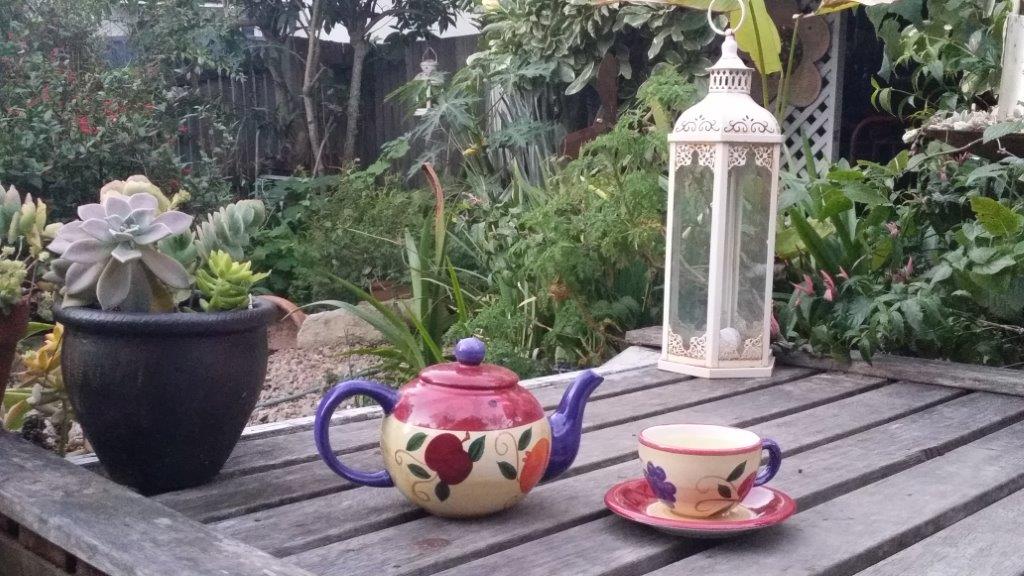
A weed tea in the garden as a cold sets in, this afternoon a mix of cobblers pegs, sow thistle, Sida retusa, cats ear, nasturium plus all herb (Plectranthus ambonicus) and a little ginger and pineapple for sweetness.
Normally I would get everything going around, but this year I am holding off the colds longer than normal. I am putting it down to weeds.
Edible greens are abundant right now so we have plenty of healthy leaves to throw into salads, curries, pasta dishes, stews or any dish you would otherwise use spinach. Cobblers pegs leaves and nasturium leaves are our main green at the moment. They need to be kept under control in the garden and the best way to do this is to eat them. Happily they make good eating. Once they have been thrown into a meal and lightly cooked they have very little flavour and are very similar to eating cooked spinach. When using them raw, I try and stick with the young leaves for better flavour – again, pretty much like using spinach.
When it comes to good health, it turns out these are also ideal plants to be eating in winter.
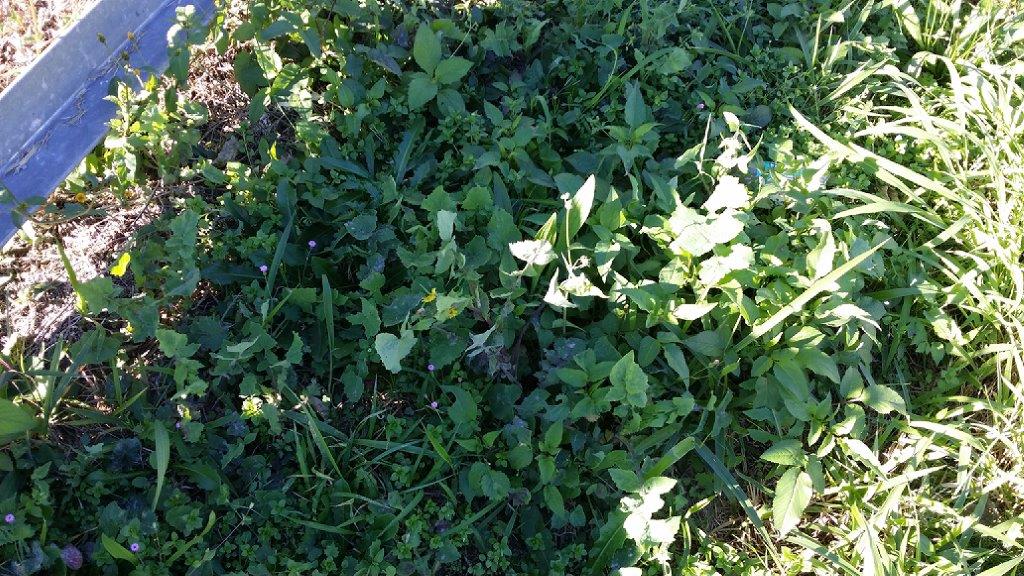
This little roadside patch is like a little vegie garden – plantain, cats ears, sow thistle, chickweed, cobblers pegs and more
Cobblers pegs (Bidens pilosa) is extremely nutritious. I can see the look on your face as you read this! Yes I know you hate them so how can this be?! They have those dreadful black spiky seeds that stick all over you. This weed is one of my favourites to discuss at talks and workshops. The look of shock and horror on people’s faces as I suggest eating it is priceless! And yet the (warm climate) world over this is a valuable and highly appreciated food plant.
Research into the use of cobblers pegs as an antimicrobial agent have been ongoing for nearly a century and have delivered scientific evidence of a great swag of medicinal properties for this humble weed, including being highly effective against antibiotic resistant staphlococcus. Over 100 phytochemicals are found in Bidens pilosa and it is this complex interplay of active ingredients which not only gives it its wonderful medicinal properties but may well be why it can remain effective against bacteria which have developed resistance to antibiotics. One active ingredient is much easier to develop a resistance to than 100.
Some references suggest that the high silica content of this plant means it should be eaten in moderation. Given that the United Nations Food and Agriculture Organisation have promoted it as a safe and nutritious plant to ward off starvation and malnutrition amongst the worlds poorest, I would think we can manage to eat a fair bit before we overdose! I personally have never felt healthier than when I started eating it regularly. For those that are interested in delving deeper into the medicinal properties of Bidens pilosa, a quick internet search will give you a huge amount of references, some more scientific than others.
Despite the fact that a handful of cobblers pegs leaves are chopped into almost every meal we eat, my husband is still horrified when he sees me wander through the weed patch across the road harvesting, and then come and brush all the prickly seeds off in our garden. I always brush the seeds into the one patch, and as they grow there I can harvest them as fresh microgreens for dinner. Win -win!
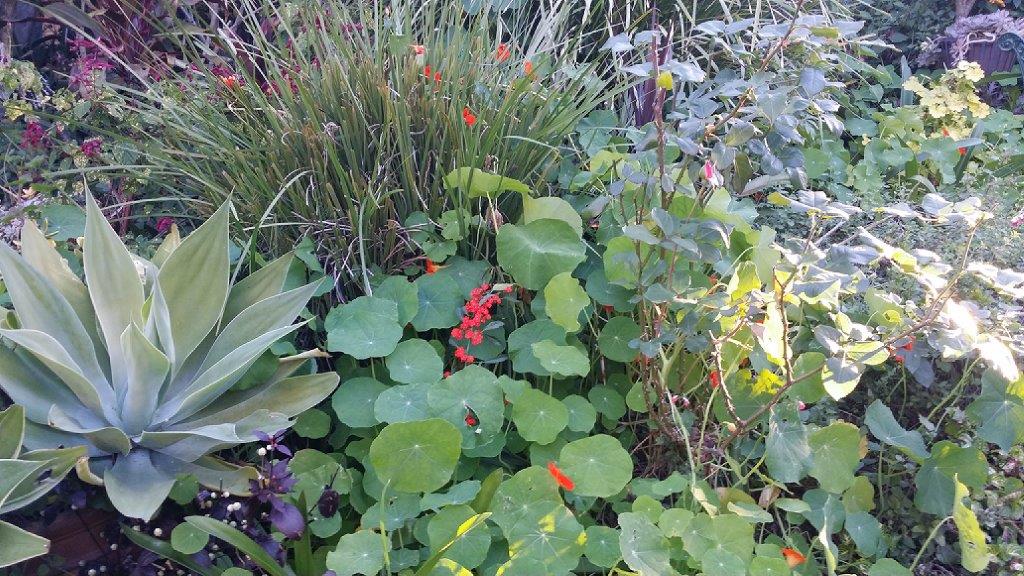
Nasturiums will smother the rest of the garden if I don’t keep them under control
Nasturiums (Tropaeolum majus) are also packed full of immune boosting goodness. They are the only plants outside the mustard family which produce mustard oils, giving them the sharp peppery taste similar to mustards. This cheerful ornamental has weed like properties – it self seeds, comes up everywhere and if I don’t control it, it will smother the garden. The easiest way to control it is to eat it, and what is too much for me to eat, the chooks get.
Nasturiums have also been shown to have antimicrobial actions and have been shown to be affective against salmonella, staphylococcus and streptococcus. As a herb they are effective in supporting and soothing the respiratory system, making them perfect for adding to the winter diet. Nasturiums have plenty of culinary uses. Use the large leaves as a food wrap for making dolmades, the flowers and young leaves are a great addition to salads, the cooked leaves make a great pot herb and the seeds can be pickled as a caper substitute. The seeds can also be dried and crushed as a pepper substitute.
Again, herbalists and traditional folk medicines have many many uses for nasturiums. We can use them medicinally for isolated conditions, or we can simply add them to our diet, and let our food be our medicine – easy!
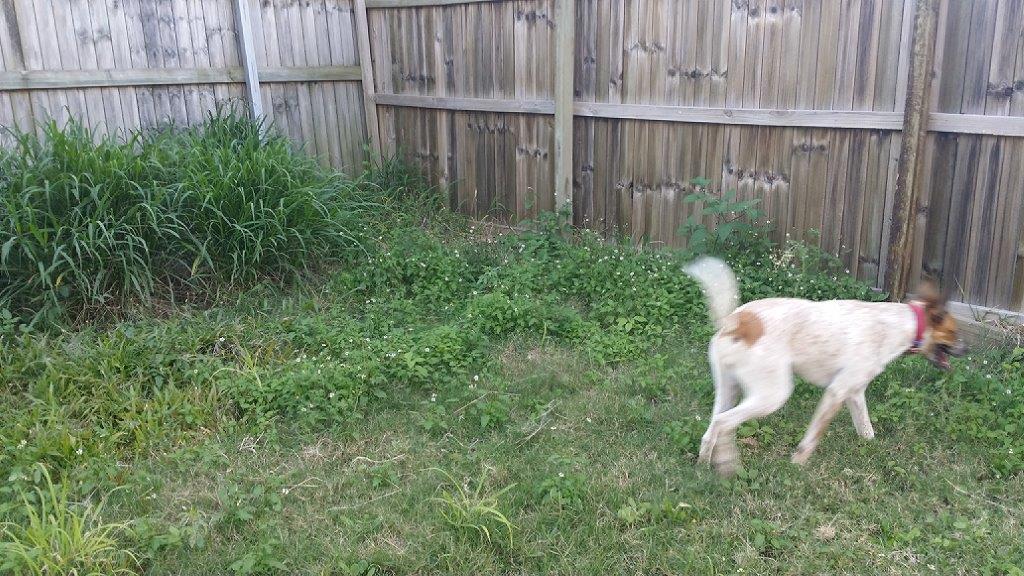
One of the dogs helping me collect weeds from the vacant lot over the road
Also in my winter greens mix is chickweed – our garden multivitamin, cats ear (true dandelion being much less common here in the subtropics), sow thistle (definitely better cooked!), plantain and paddy’s lucerne. Lets look at bit at the properties of these plants to see why they work for us:
Chickweed (Stellaria media). This delicate winter weed has a lovely fresh flavour and is great in salads, but I chuck handfuls into everything, even on pizzas. From a herbal point of view, chickweed is mainly used for skin conditions, but it is rich in minerals and antioxidants, high in protein and vitamins A and C and has twice the iron as spinach.
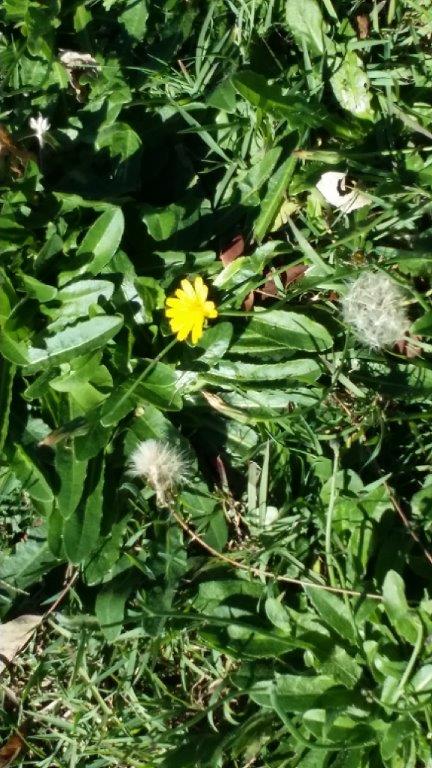
Cats ear
Cats ear (Hypochoeris radicata). This looks like dandelion and is sometimes called false dandelion. Over the centuries it has been a popular pot herb, and like dandelion, the roots can be roasted as a coffee substitute. This plant has been a popular healing plant in India. It has been shown to be high in vitamin C and to exhibit antioxidant and antimicrobial properties and to strengthen the liver and kidneys.
Paddy’s lucerne (Sida retusa). This deep rooted weed brings nutrients up from deep in the soil, playing an important role in soil improvement. The Australian Aborigines would chew a leaf to help relieve diarrhoea, for which it is very effective. It is also very valuable for reducing inflammation in mucous membranes, which is pretty useful when dealing with runny noses. I have used it successfully to help with chronic sinus conditions, as well as funny tummies. Chew a couple of leaves a day or throw a teaspoon of dried leaves into a meal, they have almost no taste but plenty of goodness. This is a weed I like to always have one of tucked somewhere in the garden.

Plantain (Plantago lancolata)
Plantain (Plantago lanceolata). Plantain also has many valuable medicinal uses, and is a key herb for supporting the respiratory system and treating coughs, bronchitis, asthma and hayfever. Its many other uses include assisting with digestive complaints, has anti-inflammatory and anti bacterial properties and is valuable in wound healing. The older leaves are too fibrous to make good eating, but I do add the young leaves to meals. I use this one a lot in herbal teas and herbal infusions and find it very easy to drink and very effective in stopping a cold in its tracks.

Sow thistle
Sow thistle (Sonchus oleraceus). Sow thistles are an indicator of good soils and are much enjoyed by chooks, guinea pigs, rabbits and even cows and pigs. I personally find them a little bitter raw but very easy to throw into dishes as a pot herb. They are high in vitamins and minerals, making them very good for us. Amongst the many medicinal uses for sow thistle are bronchial infections and as an effective antioxidant.

Although this patch includes a wonderful selection of edible weeds, being on the side of a road like this it is not the best place for foraging as it may well contain pollutants which have washed off the road
I do not eat weeds because I am a health nut – far from it. I am a time poor gardener and a lazy cook, and I hate shopping (for anything other than plants!). The weeds are just there. All I need to do is pick them as I want them. Not only are they the easiest food I have ever grown, they are easily the most nutritious. By adding just a handful of weeds to our daily diet we not only provide ourselves with fresh and free food, but we are also using our food as medicine and massively supporting our health.
These are by no means the only weeds that are both nutritious and medicinally useful to us at this time of year, but they are the ones that are abundant around me this year and so I am using this selection. In addition we can plant a huge array of herbs which have wonderful medicinal uses in supporting our immune systems and helping us fight off coughs and colds. Because we call them “herbs” as opposed to “weeds” we value them in our garden. I have recently planted clover into my lawn, and plantain, dandelion, cats ears, chickweed, emelia, sow thistle, wild brassicas and yes, cobblers pegs into my new herb garden. To me these plants are of value for their medicinal, food and aesthetic values. Yes aesthetics. Value is in the eye of the beholder and if we enjoy the look of a flourishing garden, filled with flowers and bees and knowing that it is also filled with wonderful food for us, then all of these “weeds” will fit perfectly into my new herb and flower garden.
What ever plants we like to grow, or which like growing in our gardens, it is immensely rewarding to know that our gardens are capable of supporting our diets and our health and wellbeing, and hopefully save us a trip to the doctor or two.
